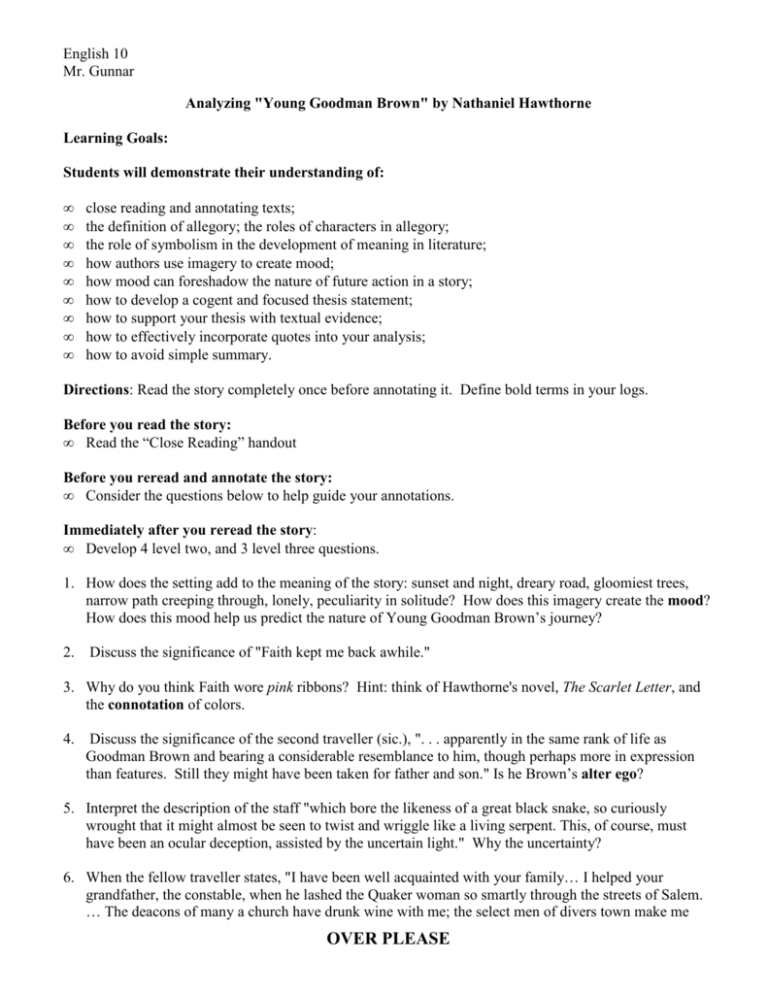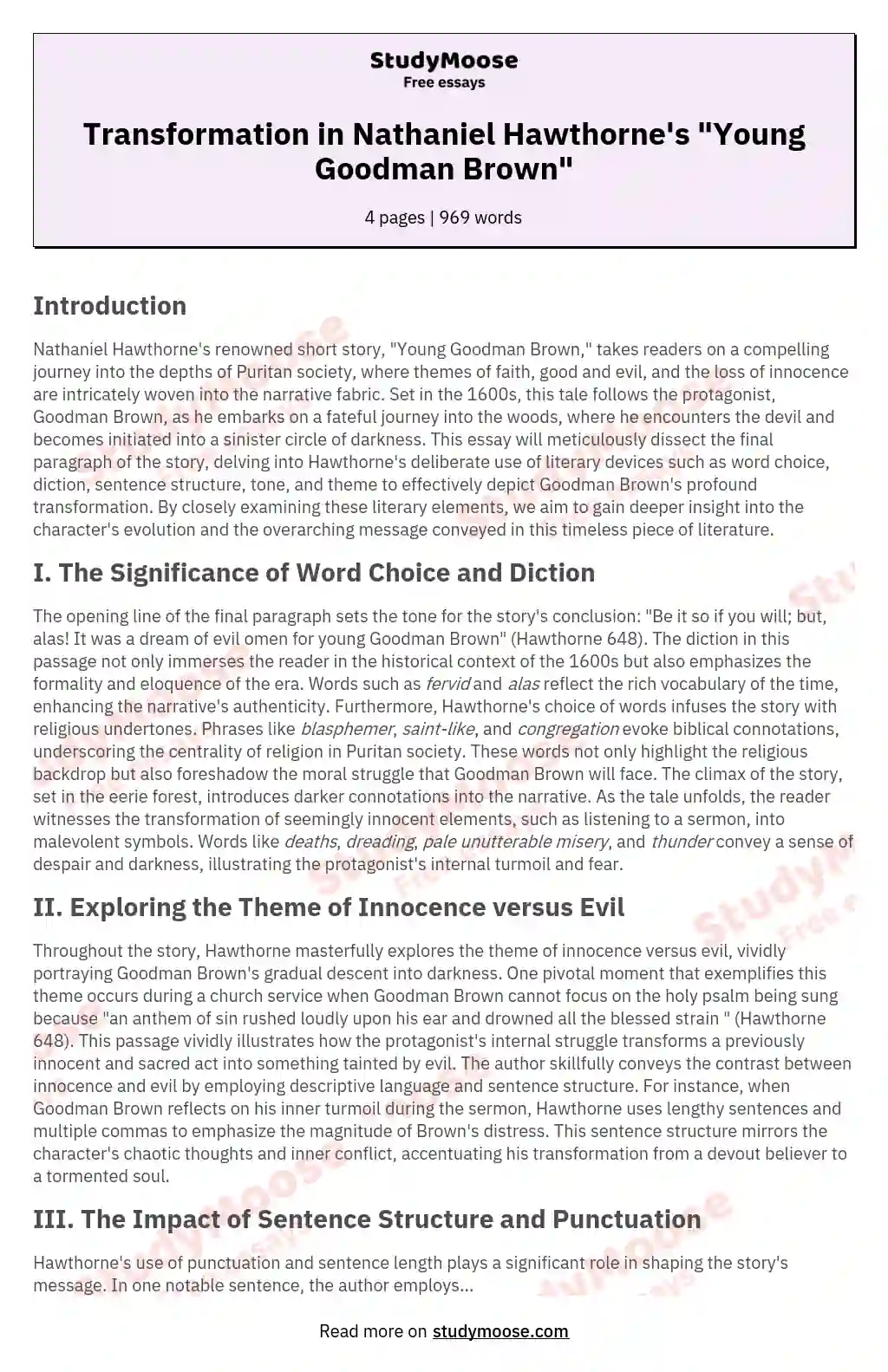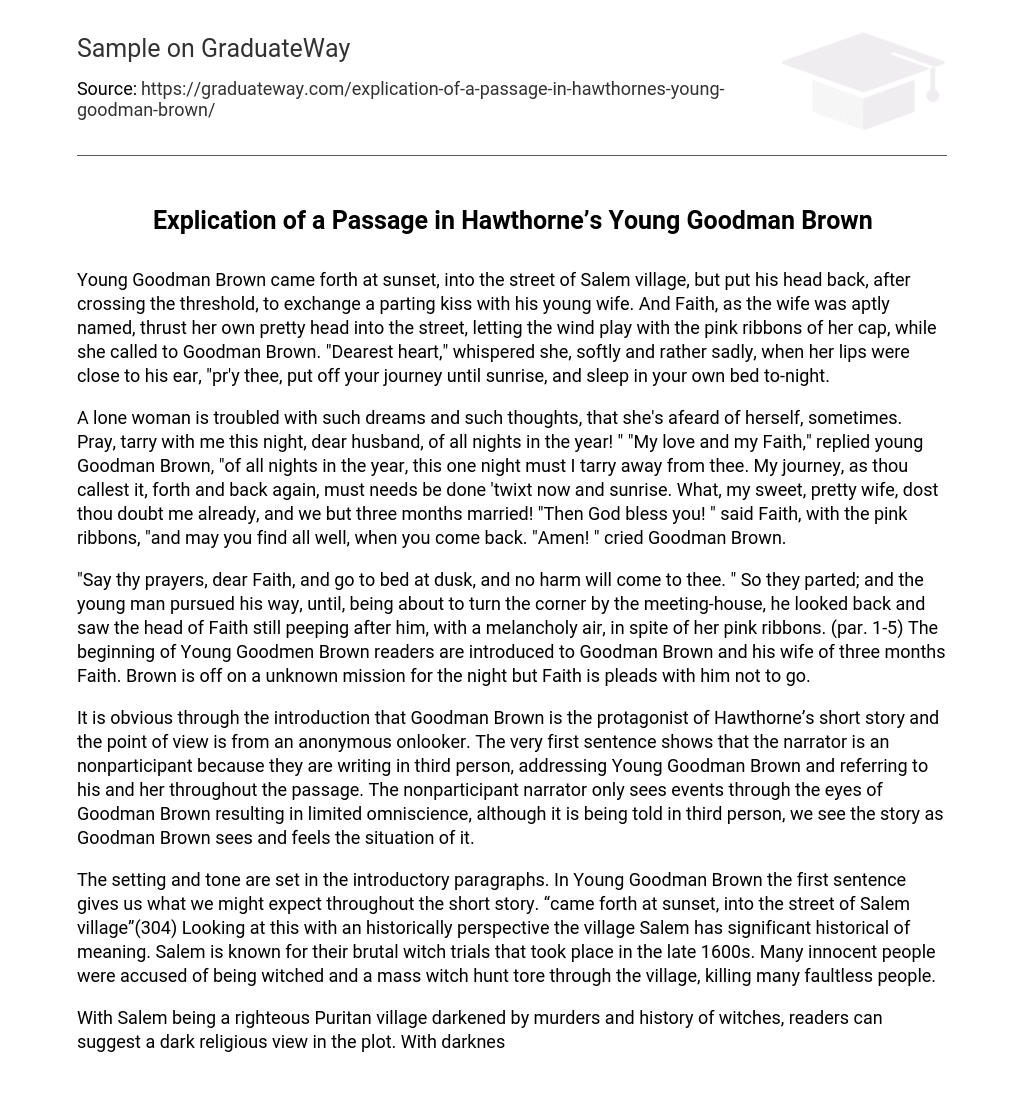"Young Goodman Brown" is a short story written by Nathaniel Hawthorne that was published in 1835. The story follows the titular character, Goodman Brown, as he embarks on a journey through the woods, encountering various strange and unsettling characters along the way. Through the use of symbolism and allegory, Hawthorne explores themes of faith, hypocrisy, and the inherent wickedness of humanity.
At the beginning of the story, Goodman Brown is a young, naive man who is deeply religious and has a strong faith in God. However, as he travels deeper into the woods, he begins to encounter people who challenge his beliefs and morals. He meets a mysterious figure who bears a resemblance to the Devil and is accompanied by a group of people who seem to be engaging in sinful and sinful activities.
As Goodman Brown watches these people, he becomes increasingly disillusioned with his faith and begins to question whether or not he truly believes in God. He becomes tempted by the Devil's offer to join him in his evil ways, but ultimately resists and decides to return home to his wife, Faith.
Upon returning home, Goodman Brown finds that his perception of the world has changed forever. He becomes cynical and mistrusting, unable to believe in the goodness of his fellow man. He becomes convinced that everyone, including his own wife, is secretly engaging in wicked activities.
Through the character of Goodman Brown, Hawthorne suggests that the inherent wickedness of humanity is something that cannot be escaped. No matter how pure and good someone may seem on the surface, there is always the potential for darkness and sin within them. This theme is further emphasized through the use of symbolism in the story.
For example, the woods that Goodman Brown travels through are often seen as a metaphor for the darkness and uncertainty of the human heart. Similarly, the figure of the Devil represents the temptation and sin that lurks within every person.
In conclusion, "Young Goodman Brown" is a powerful story that explores themes of faith, hypocrisy, and the inherent wickedness of humanity. Through the use of symbolism and allegory, Hawthorne effectively conveys the idea that no one is truly immune to the temptation of sin and the potential for darkness within their own hearts.









